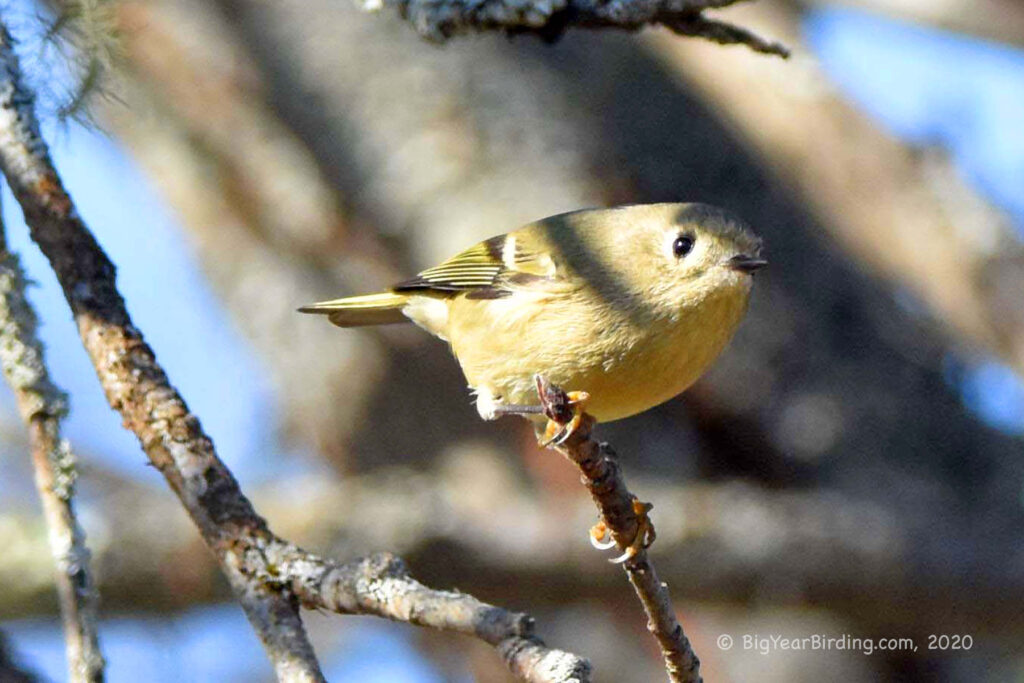
The Ruby-crowned Kinglet (Regulus calendula) is a small songbird that belongs to the family Regulidae. This tiny bird measures around 3.5-4 inches in length, has a wingspan of 6 inches, and weighs only 0.2-0.3 ounces. It is one of the smallest birds in North America, but despite its small size, it is a fast and agile flyer that can easily navigate through dense forests and trees.
The Ruby-crowned Kinglet is a very distinctive bird with a bright red crown that is usually hidden unless the bird is agitated or excited. The rest of the bird’s plumage is olive-green with a white eye-ring and wing bars. The males have a bright red spot on their crown, while the females have a yellowish spot. The bird’s distinctive appearance makes it easy to identify even at a distance.

Ruby-crowned Kinglets are migratory birds that breed in North America during the summer and winter in Mexico and Central America. They migrate during the fall and spring, and their migration routes can take them as far north as Alaska and as far south as Panama. During migration, they can be found in a variety of habitats, including forests, woodlands, and even urban parks.

During the breeding season, Ruby-crowned Kinglets prefer to nest in coniferous forests, and they build their nests in tree cavities or in the branches of trees. Their nests are made of grass, feathers, moss, and other materials, and they usually lay 6-10 eggs. The eggs are incubated by the female for around 14 days, and the young leave the nest after about two weeks.

In conclusion, the Ruby-crowned Kinglet is a fascinating and distinctive bird that is easy to identify in the field. Despite its small size, it is a remarkable flyer that can navigate through dense forests and trees. Its bright red crown and olive-green plumage make it a striking bird to observe, and its migration routes take it to many different habitats across North and Central America.

